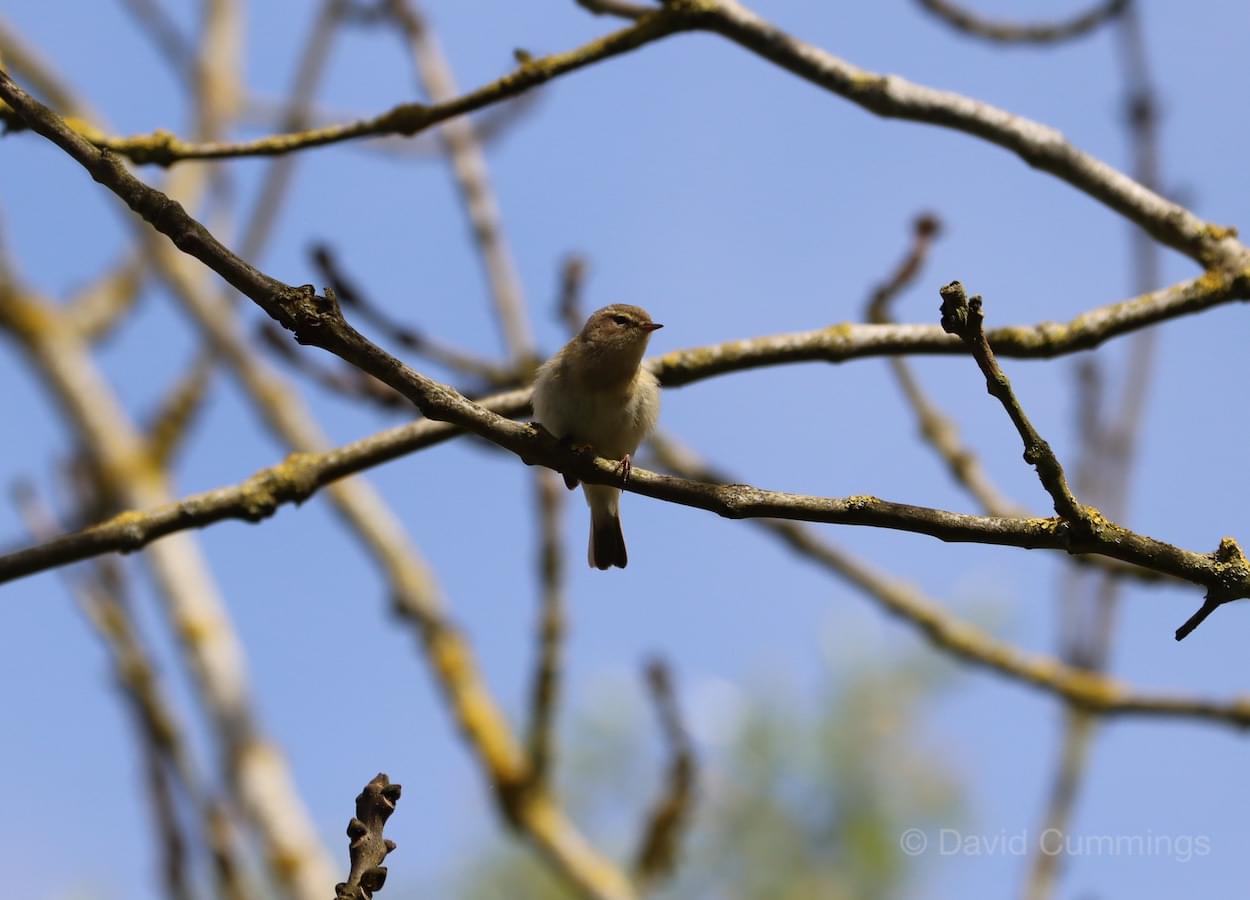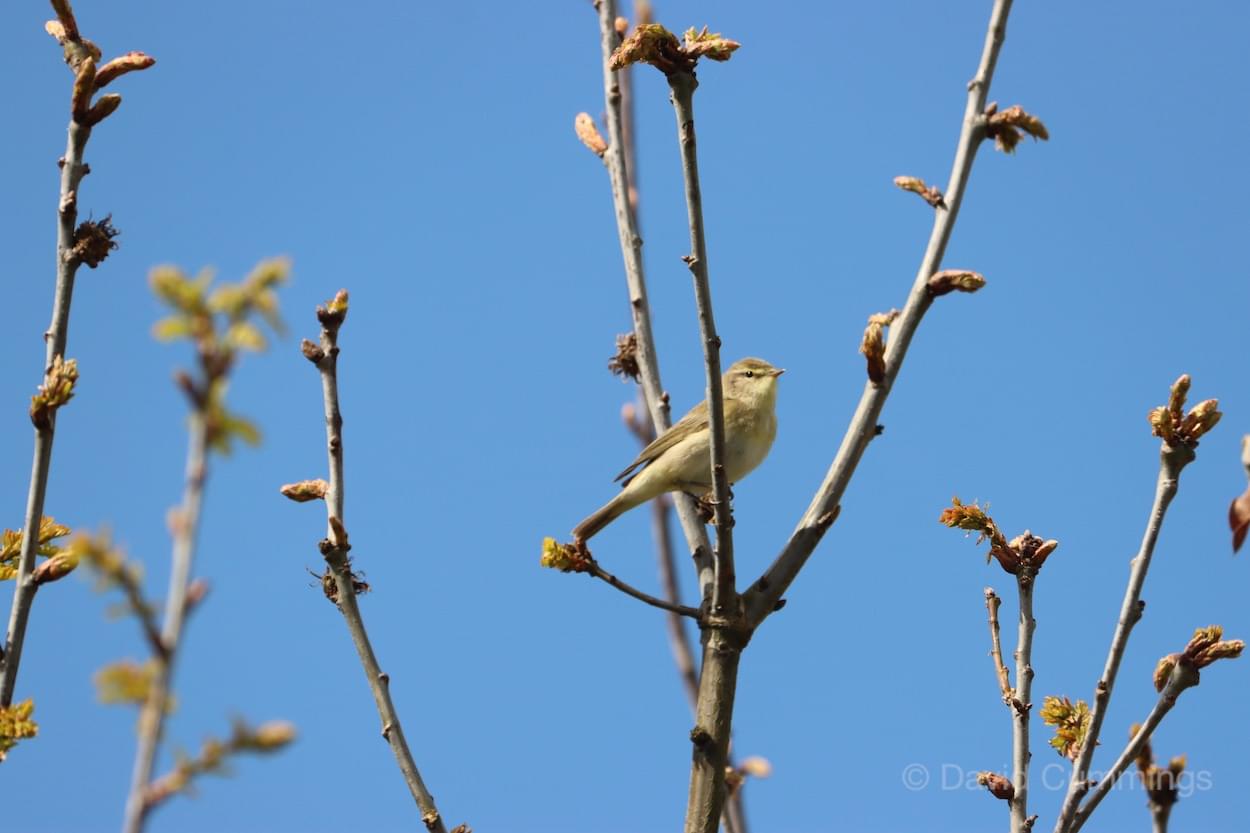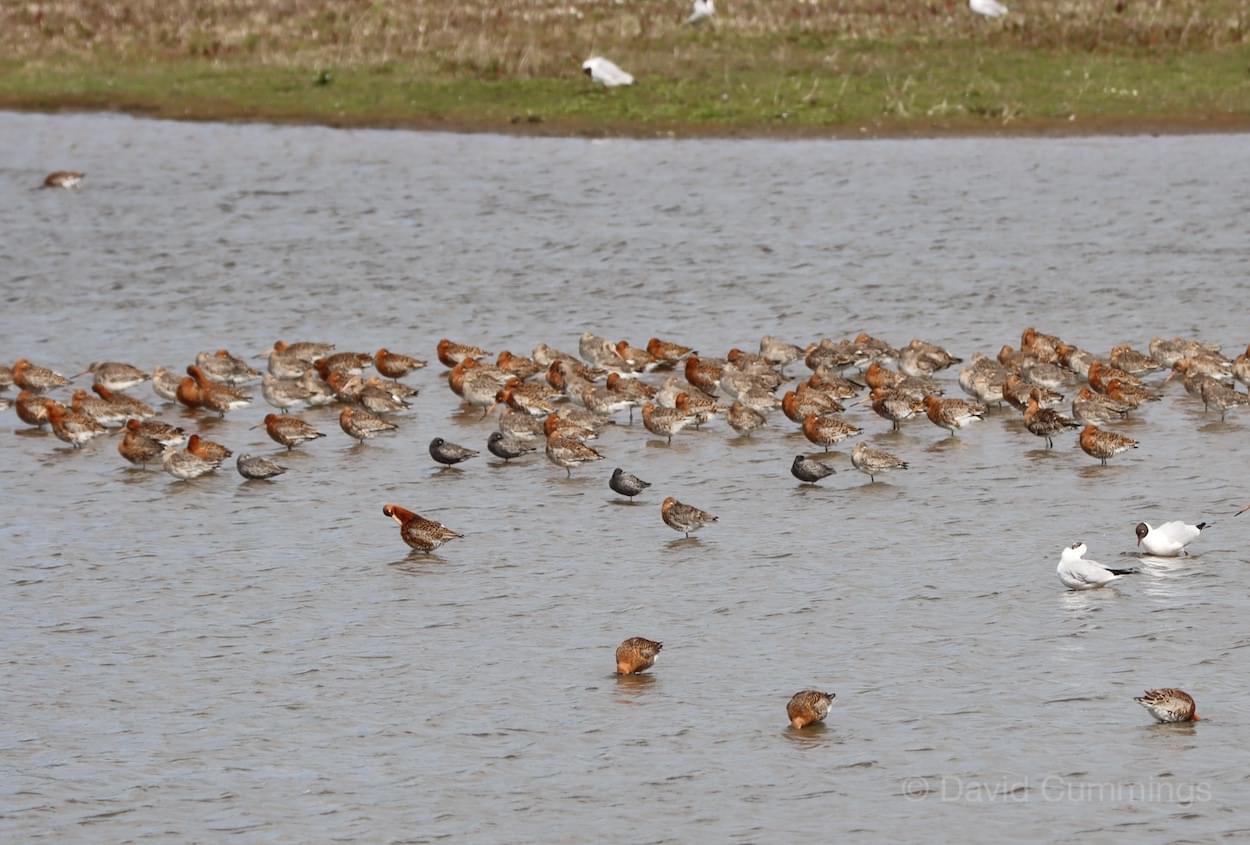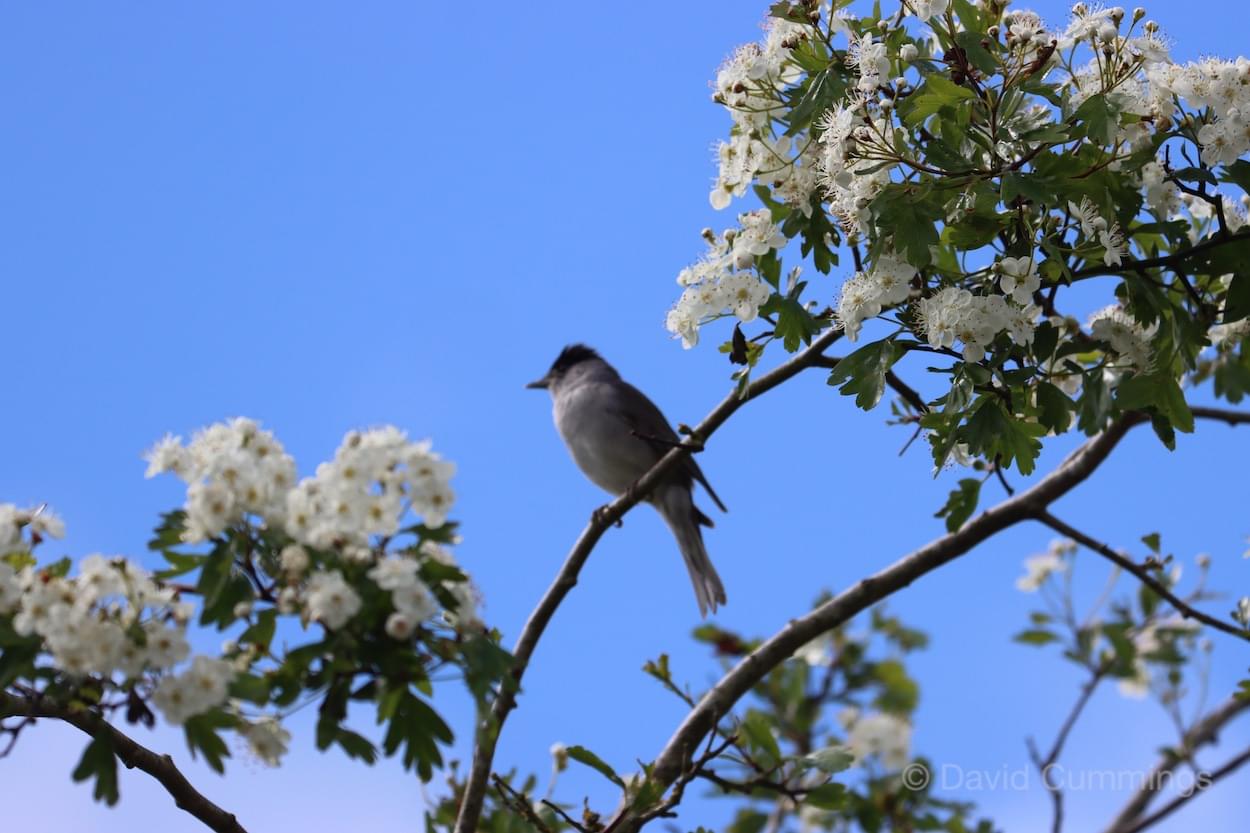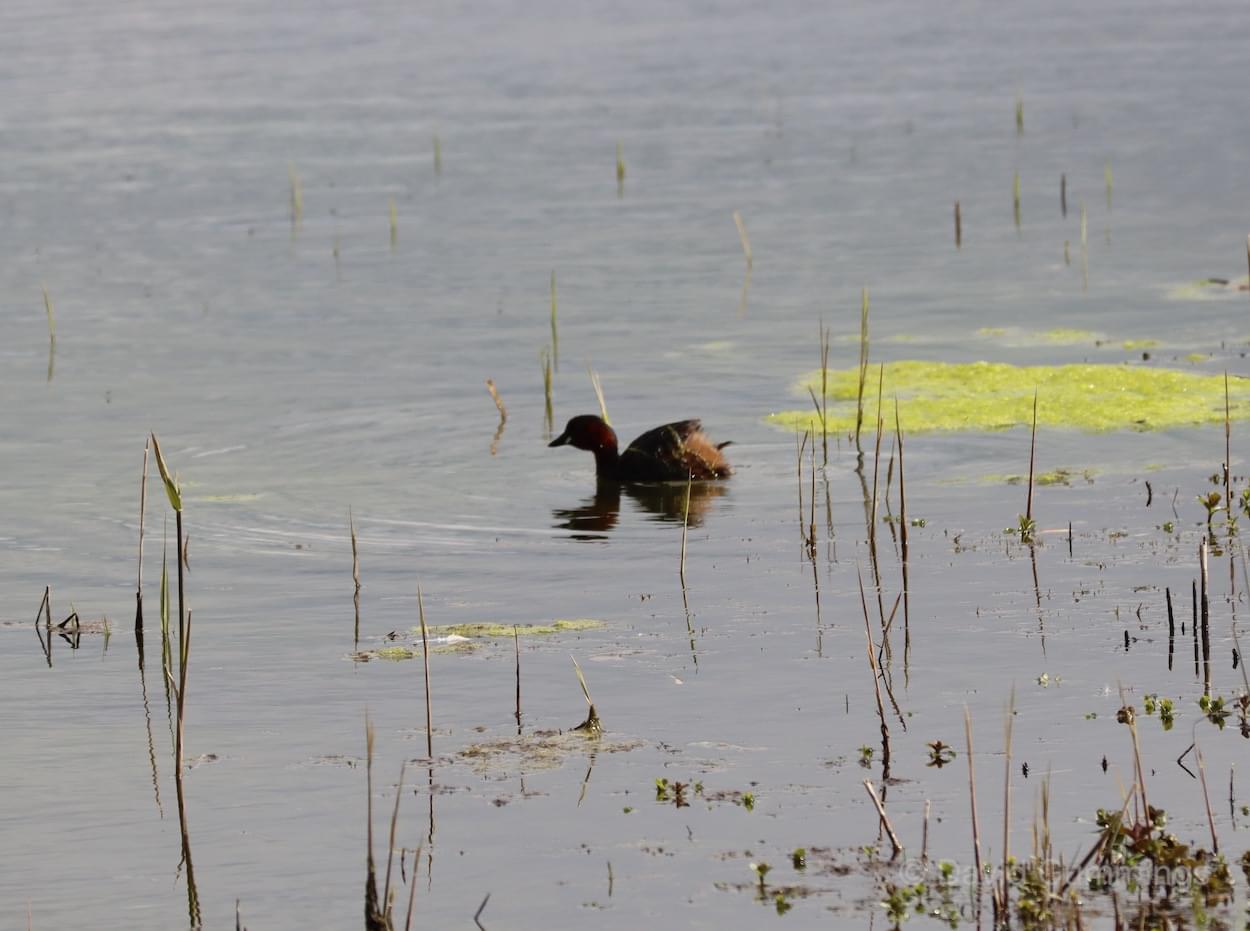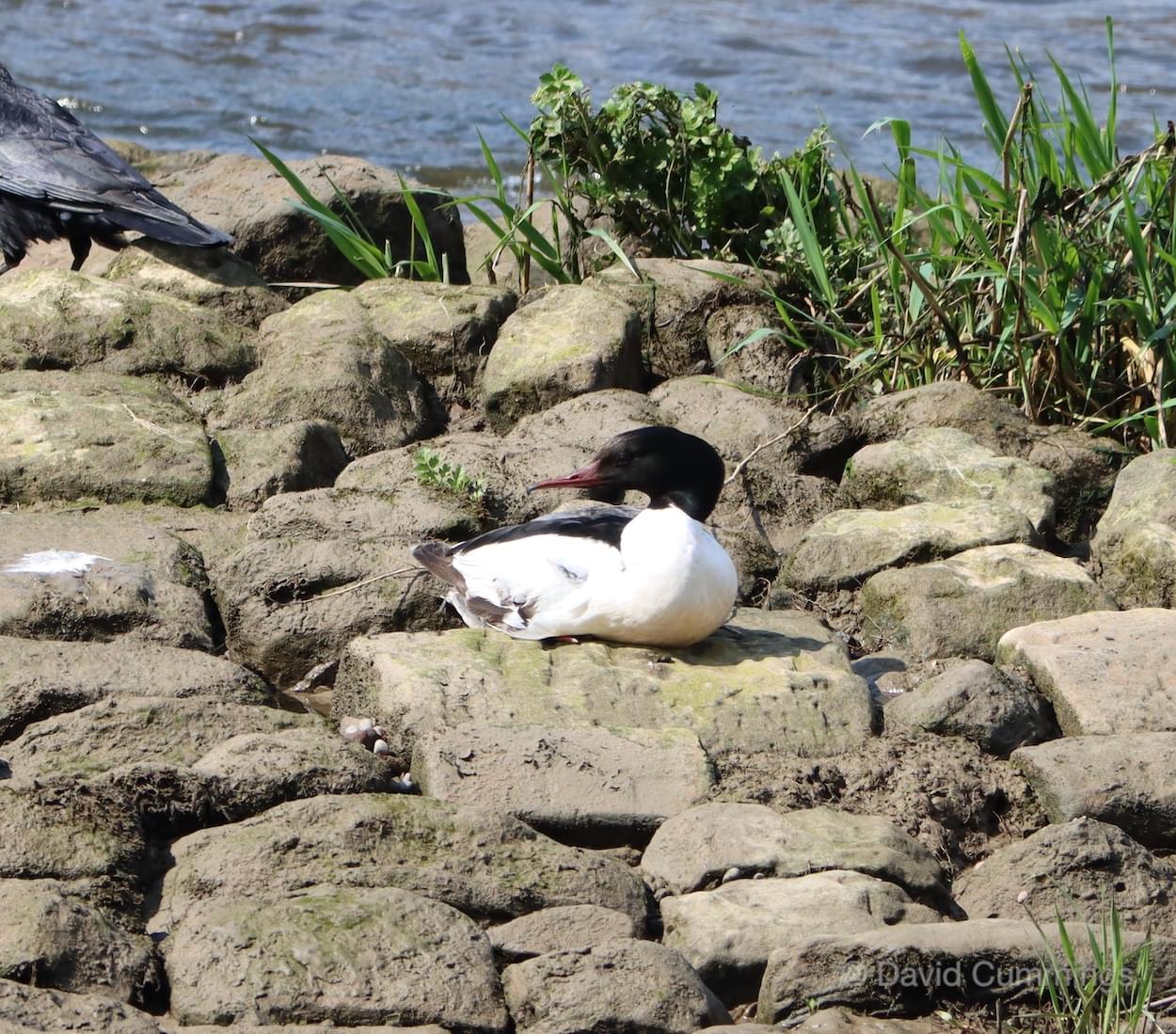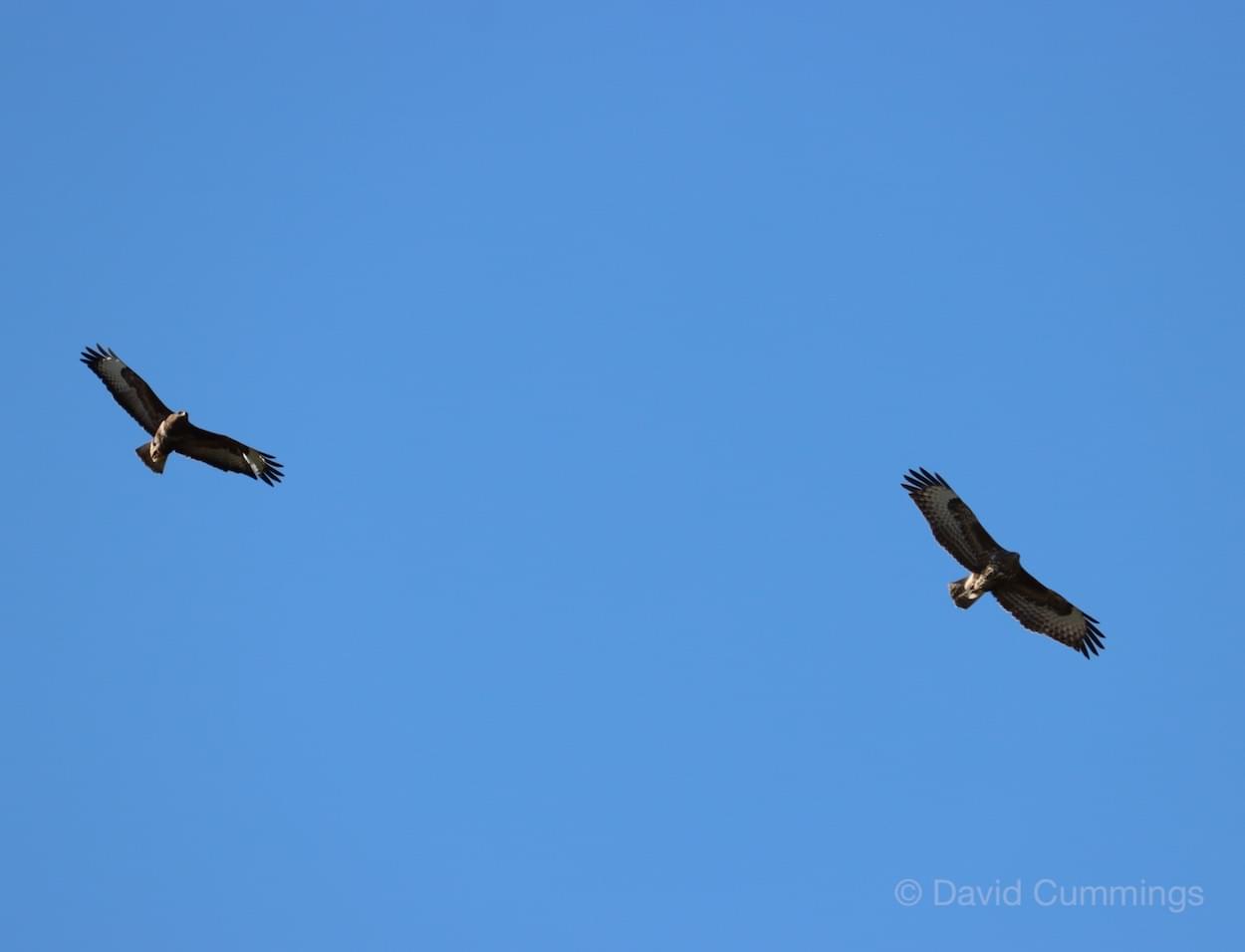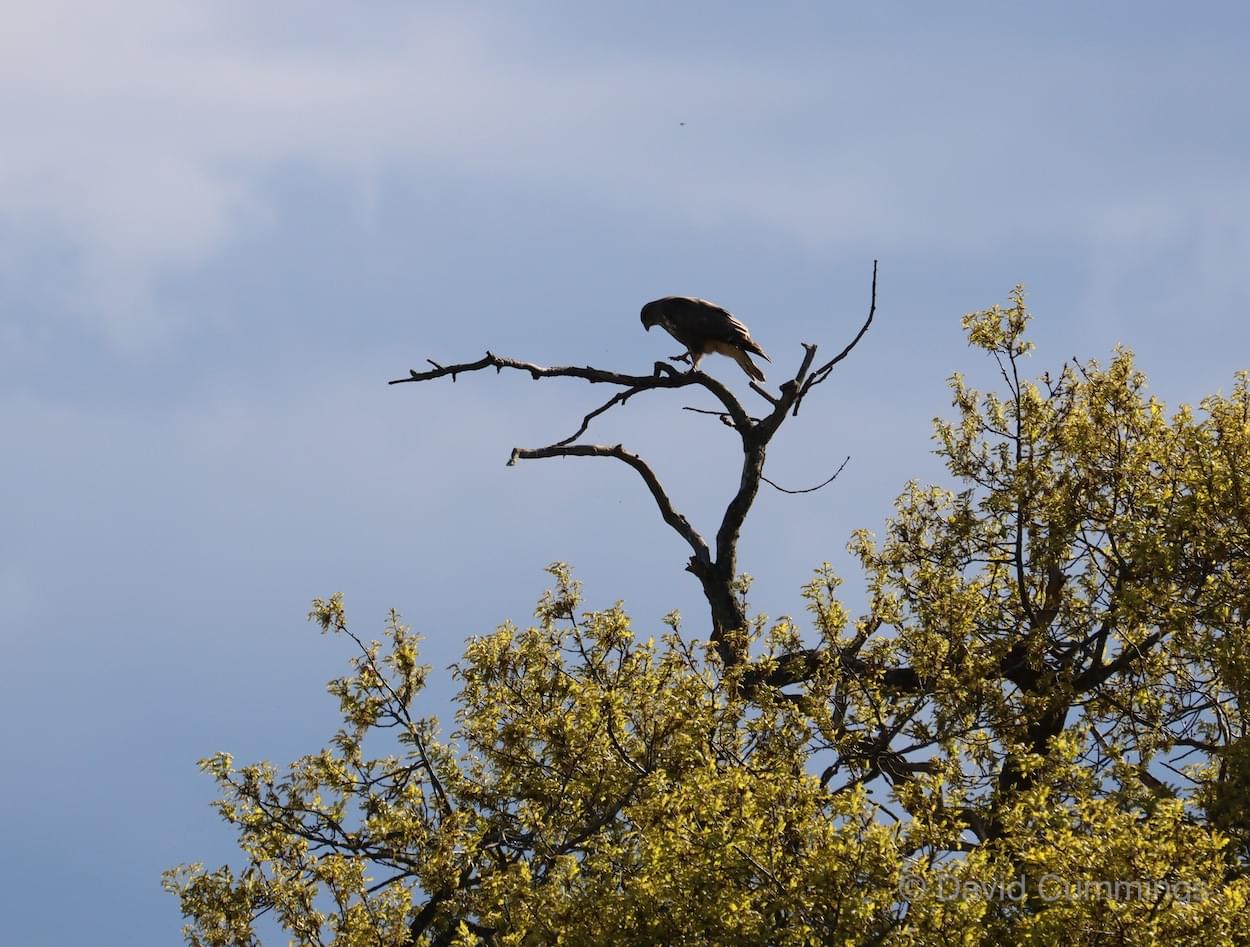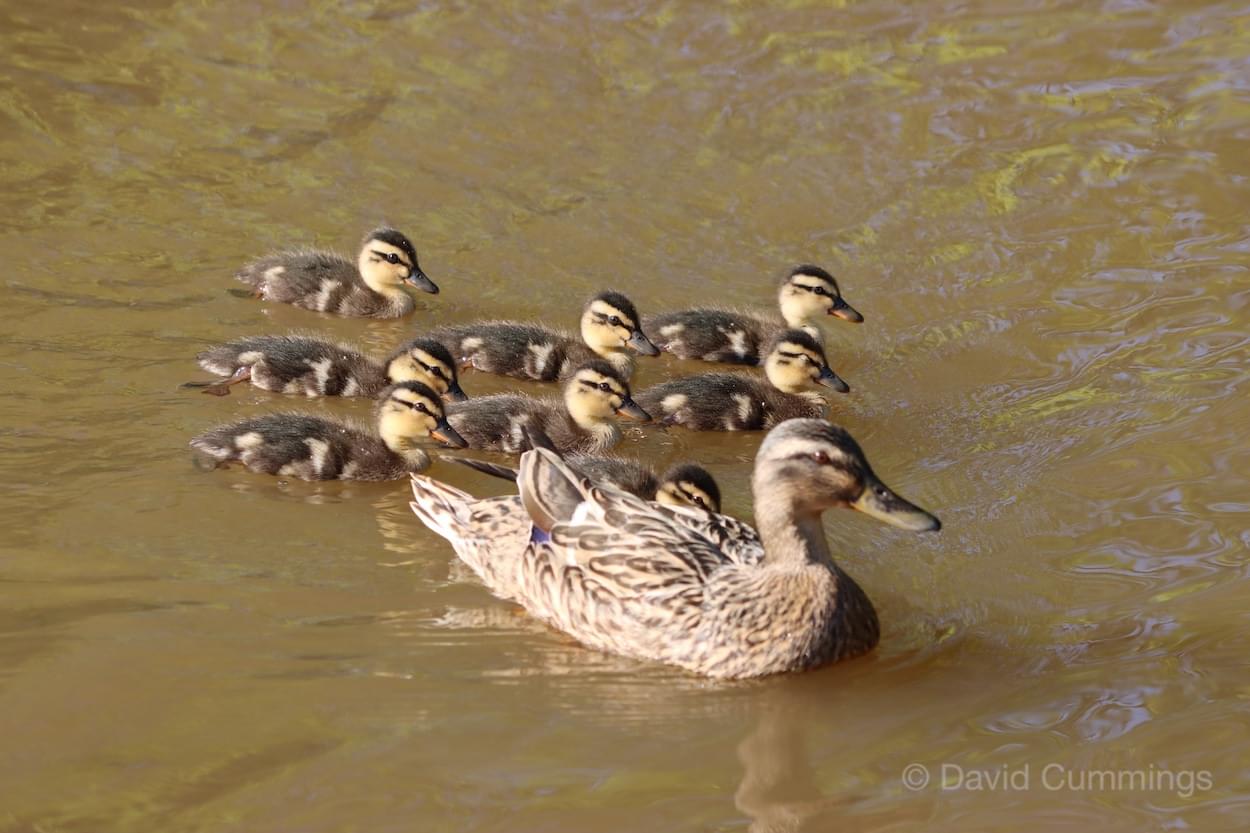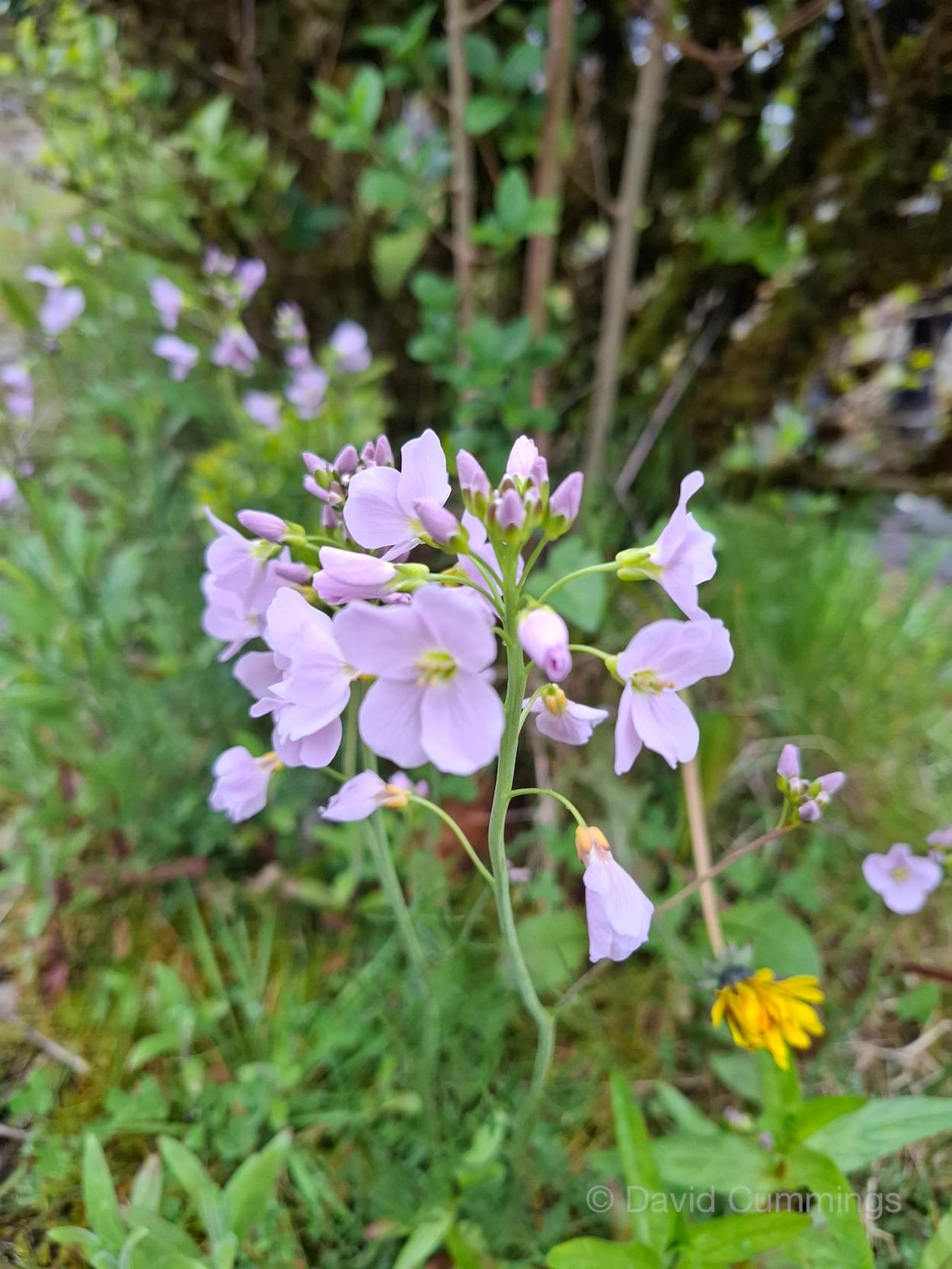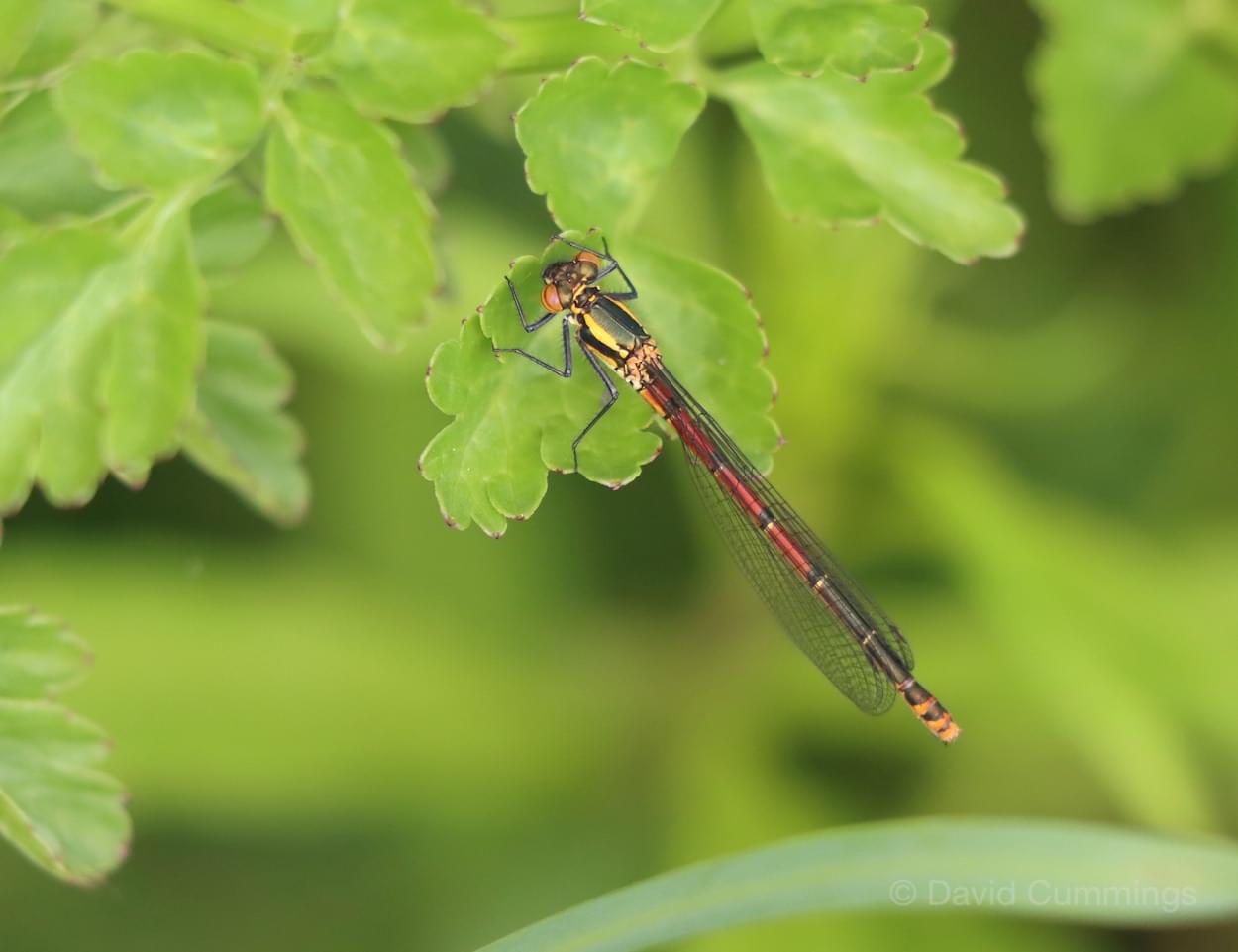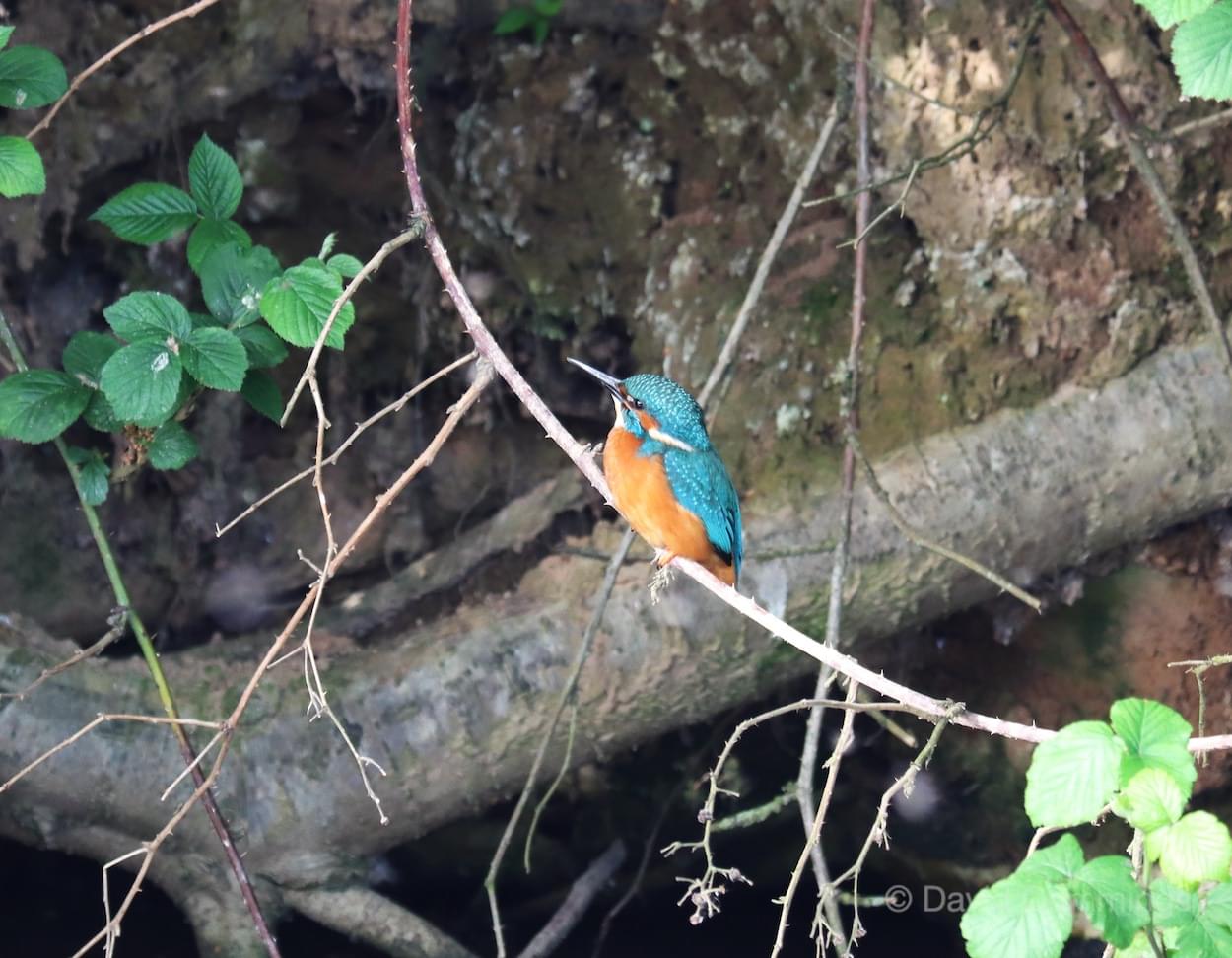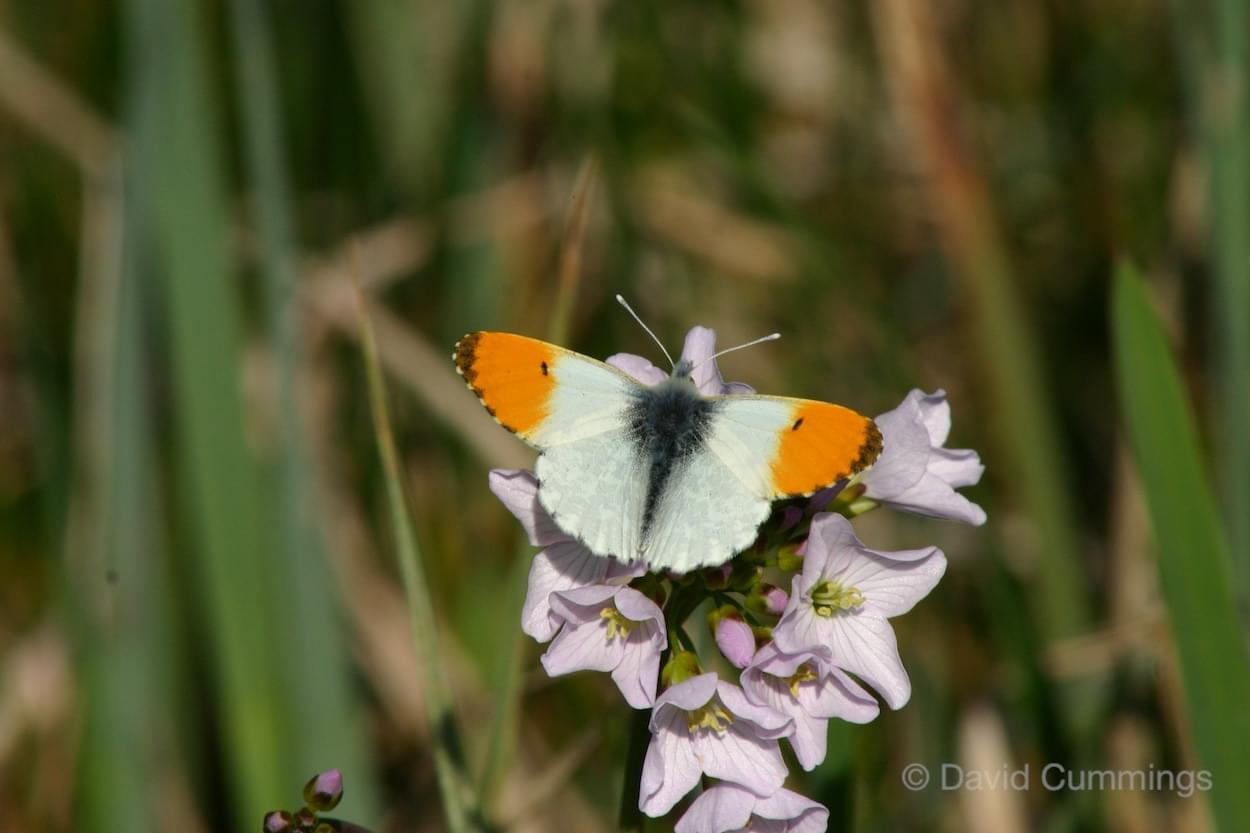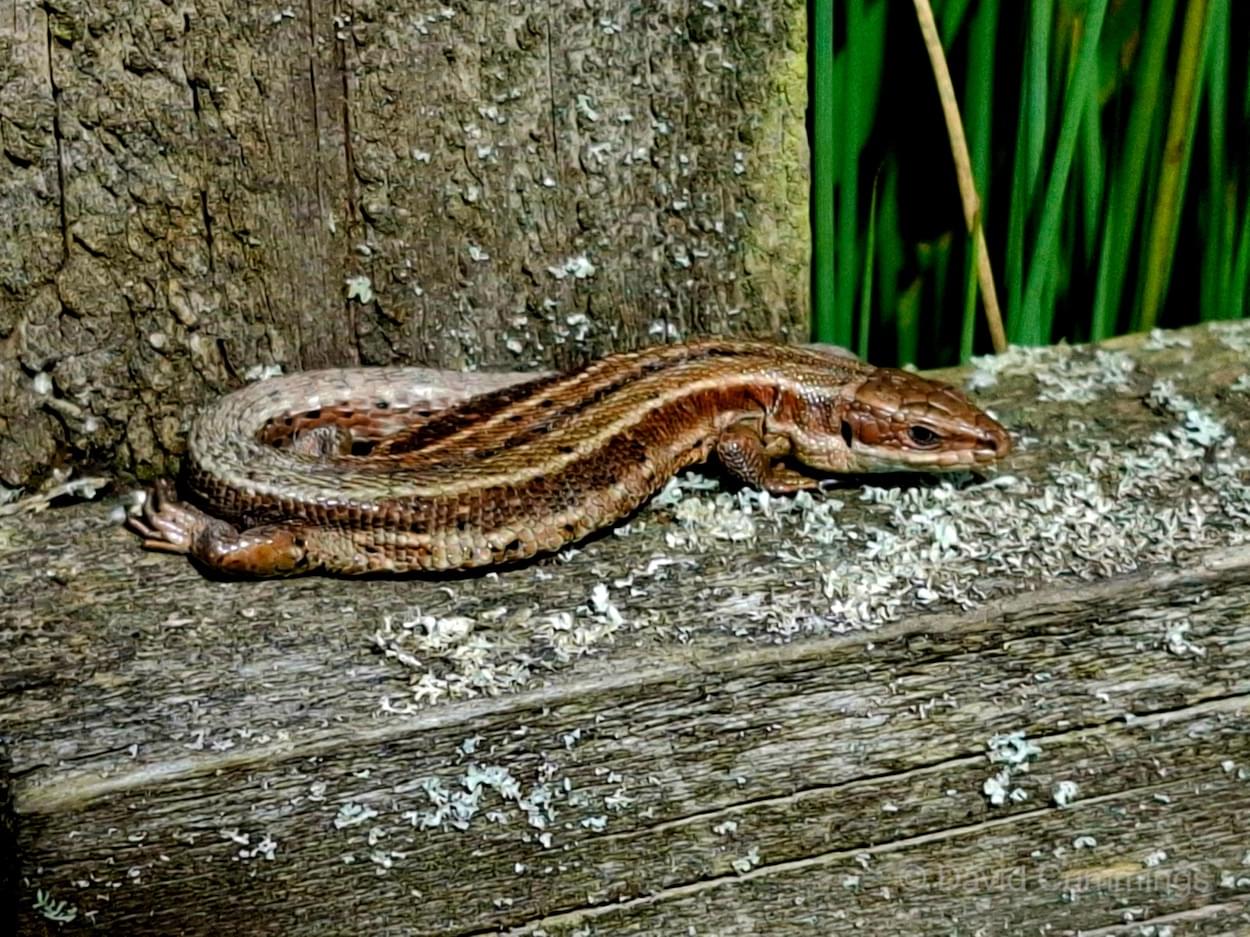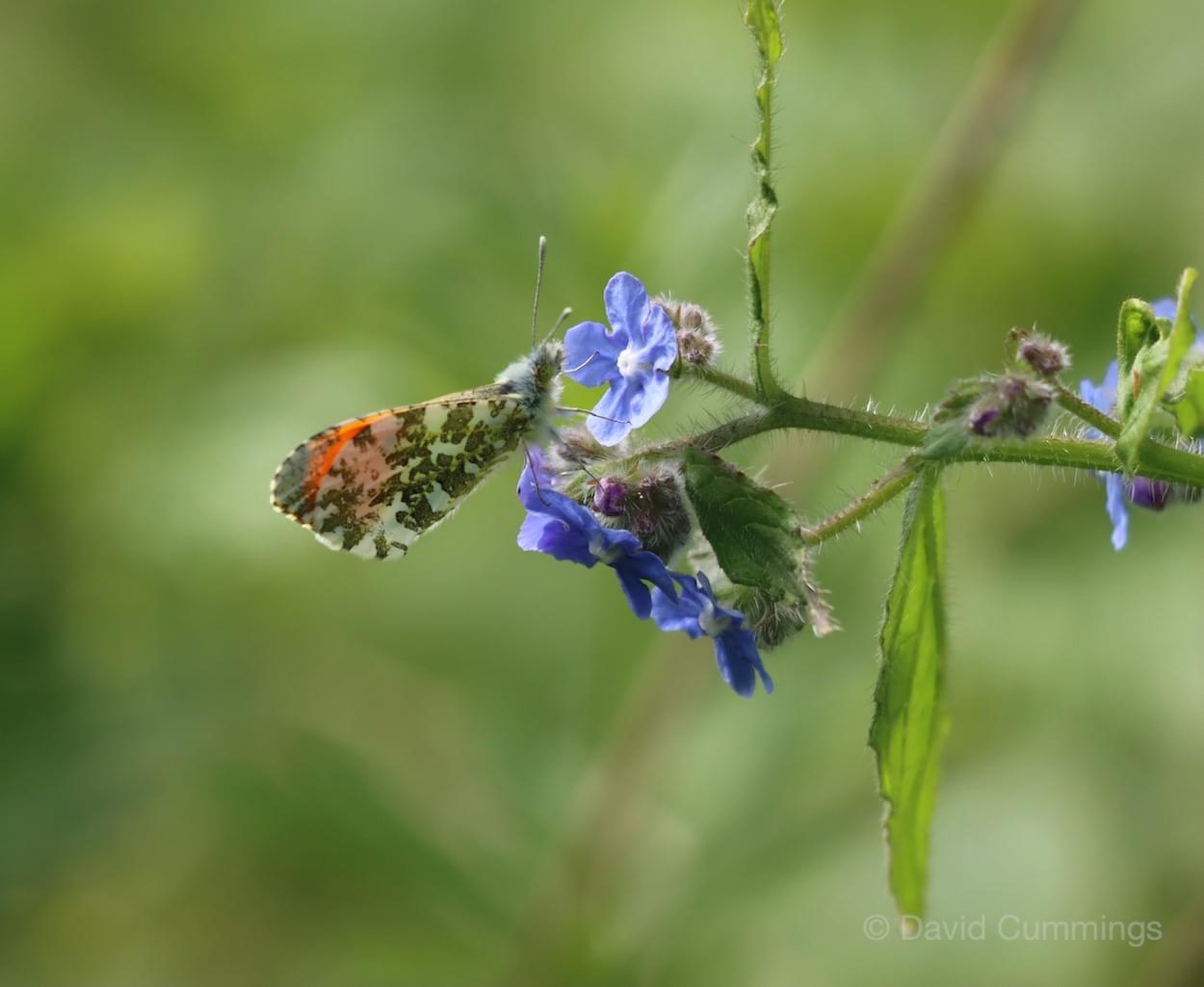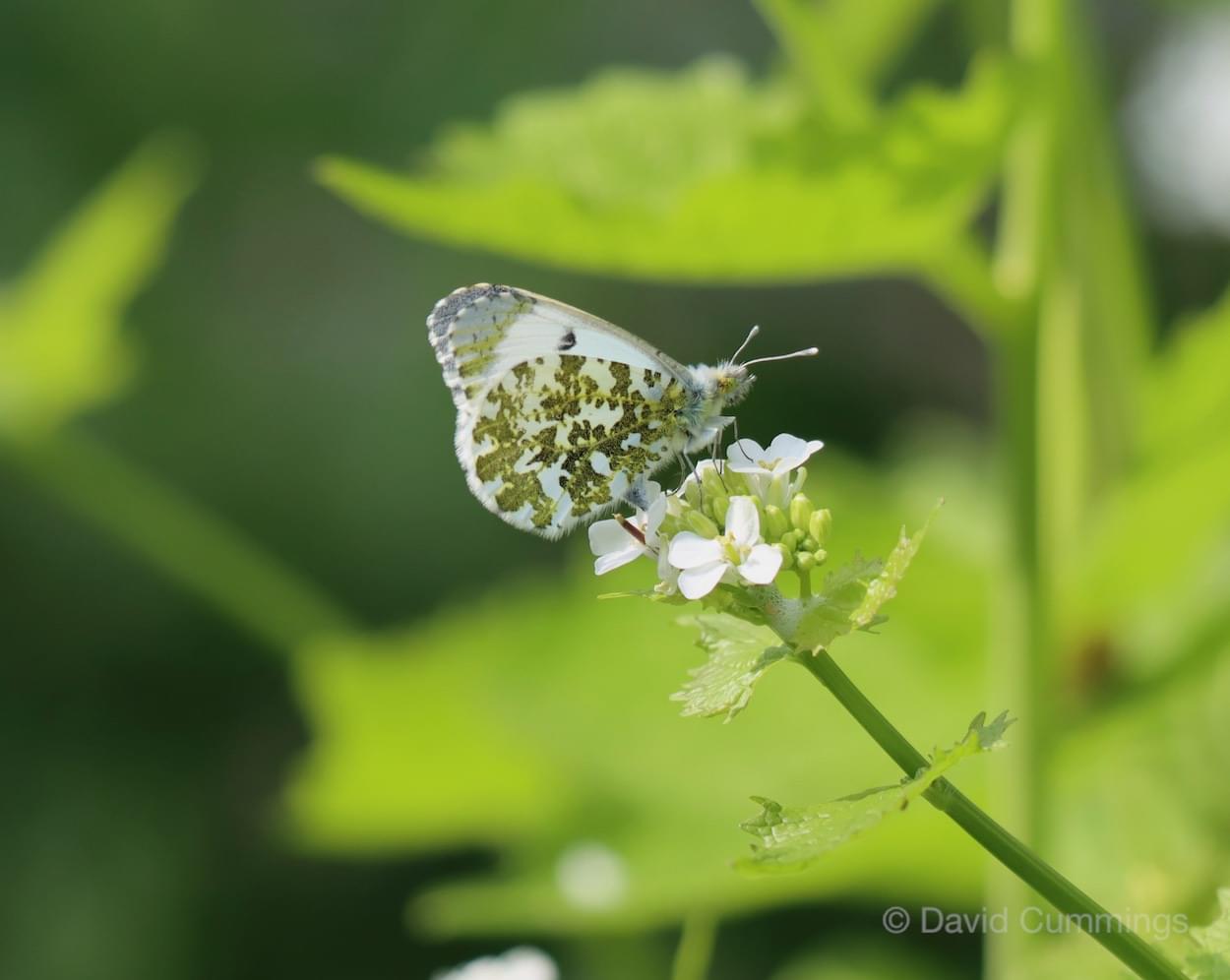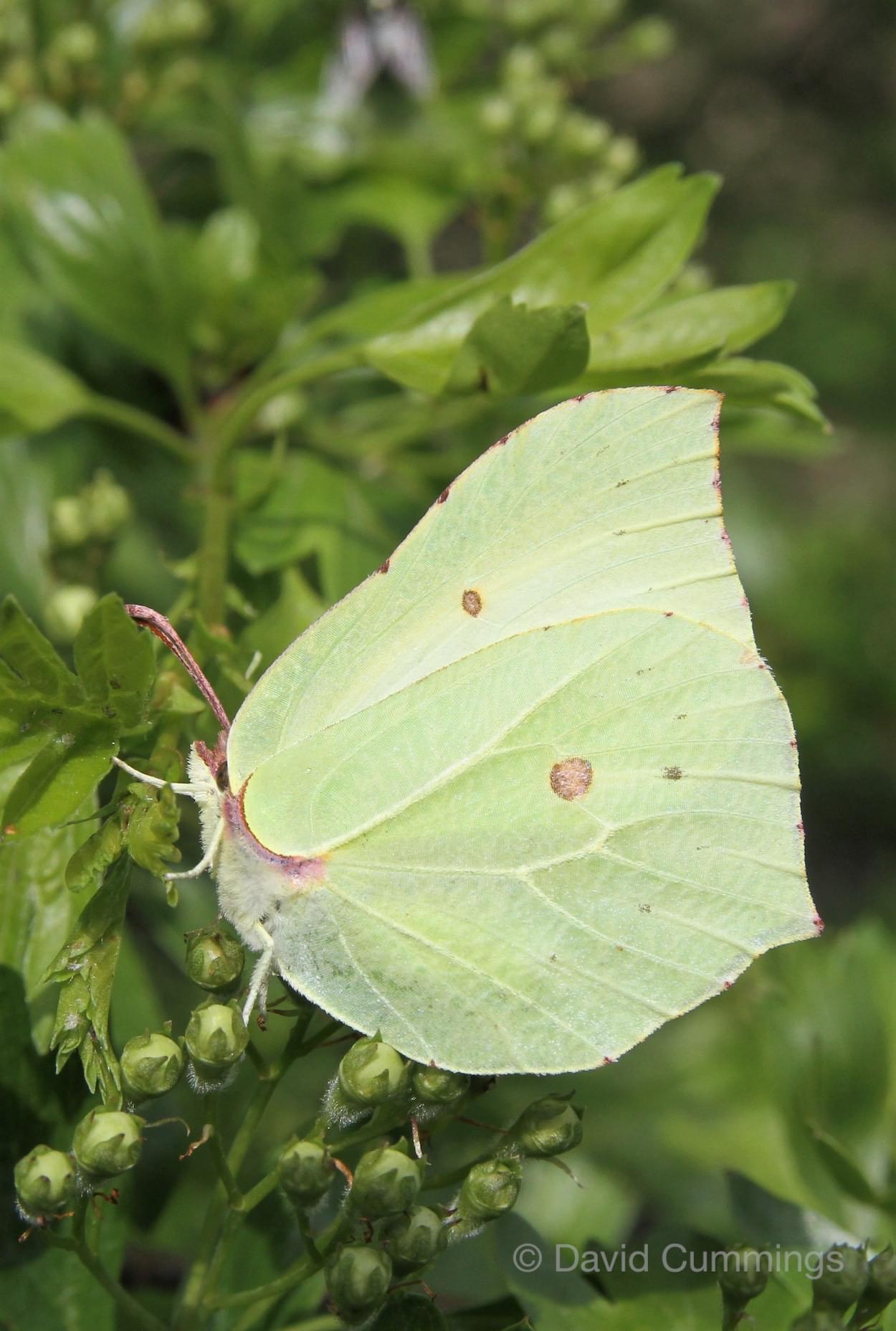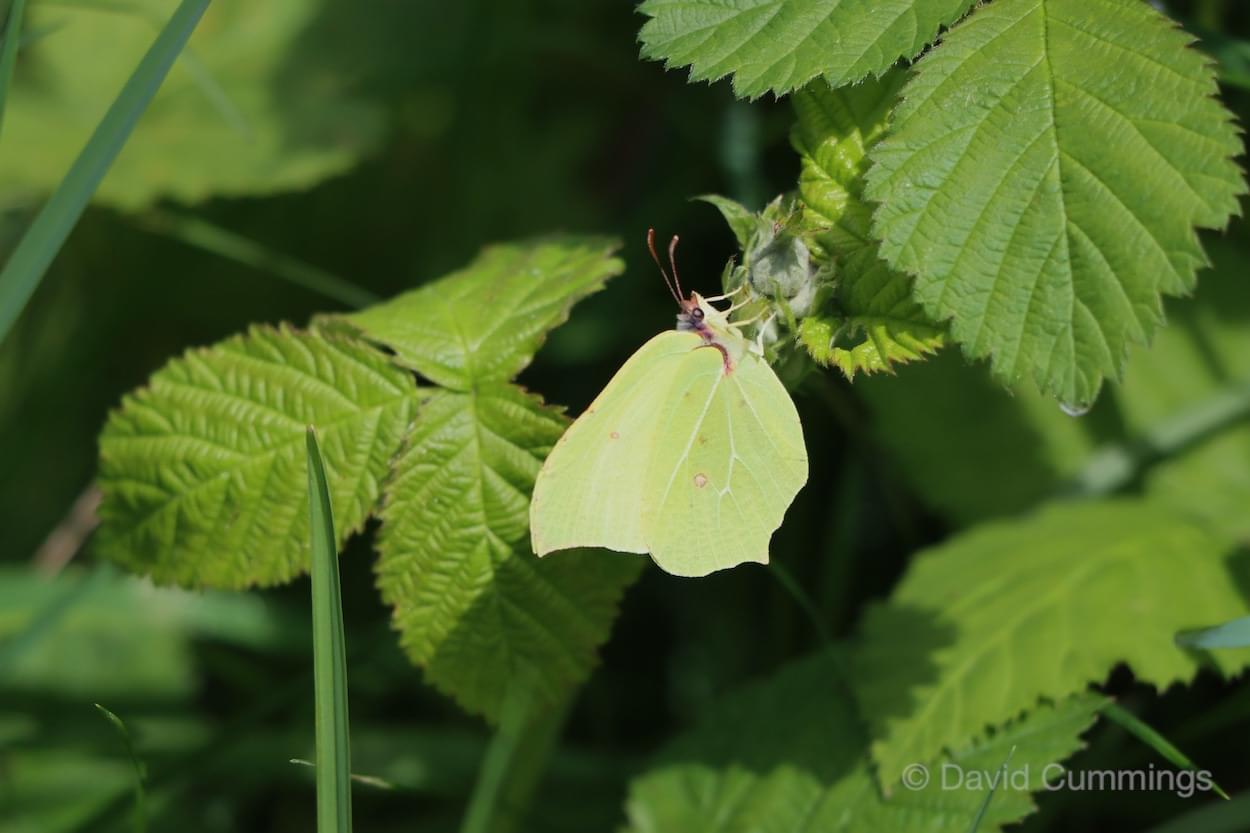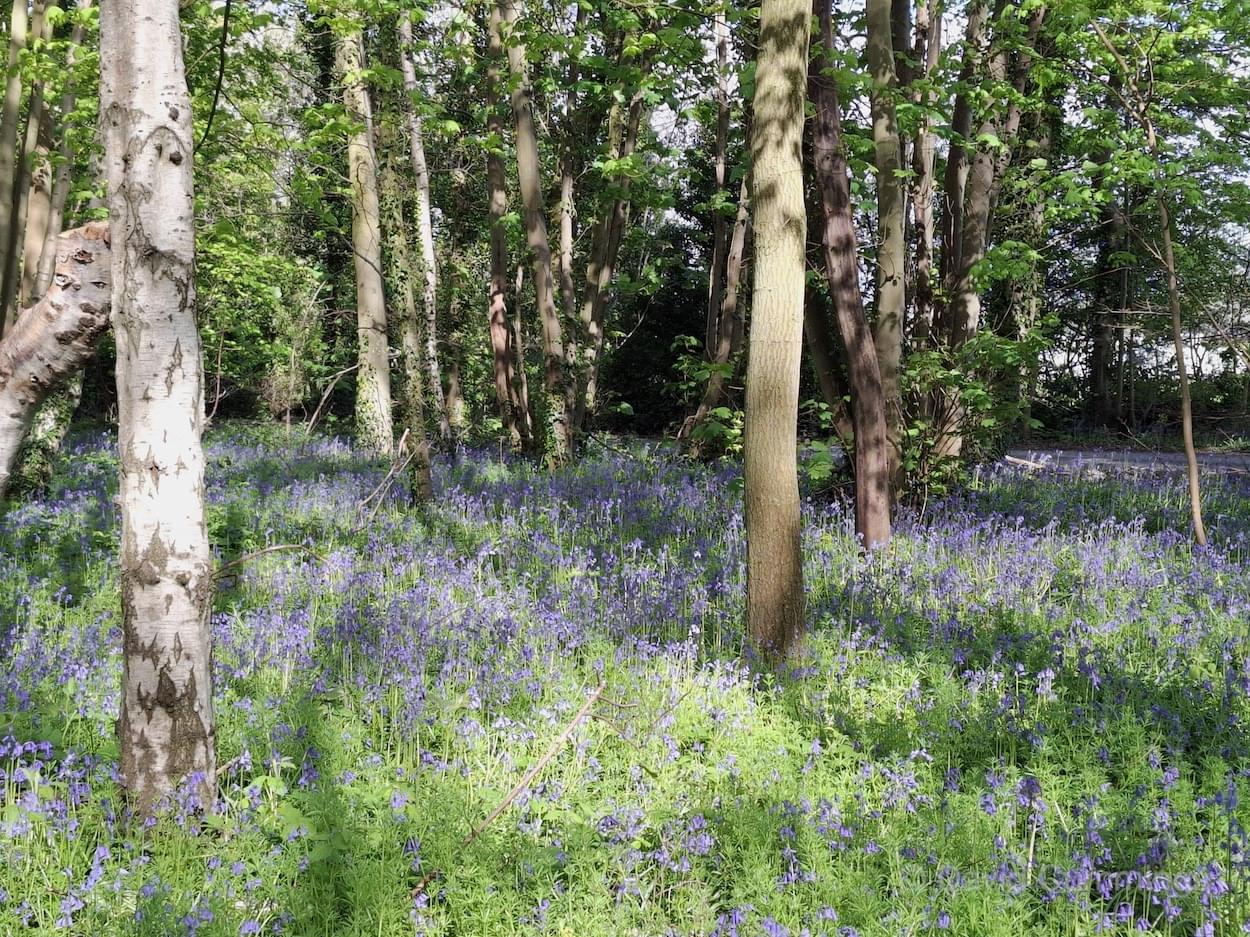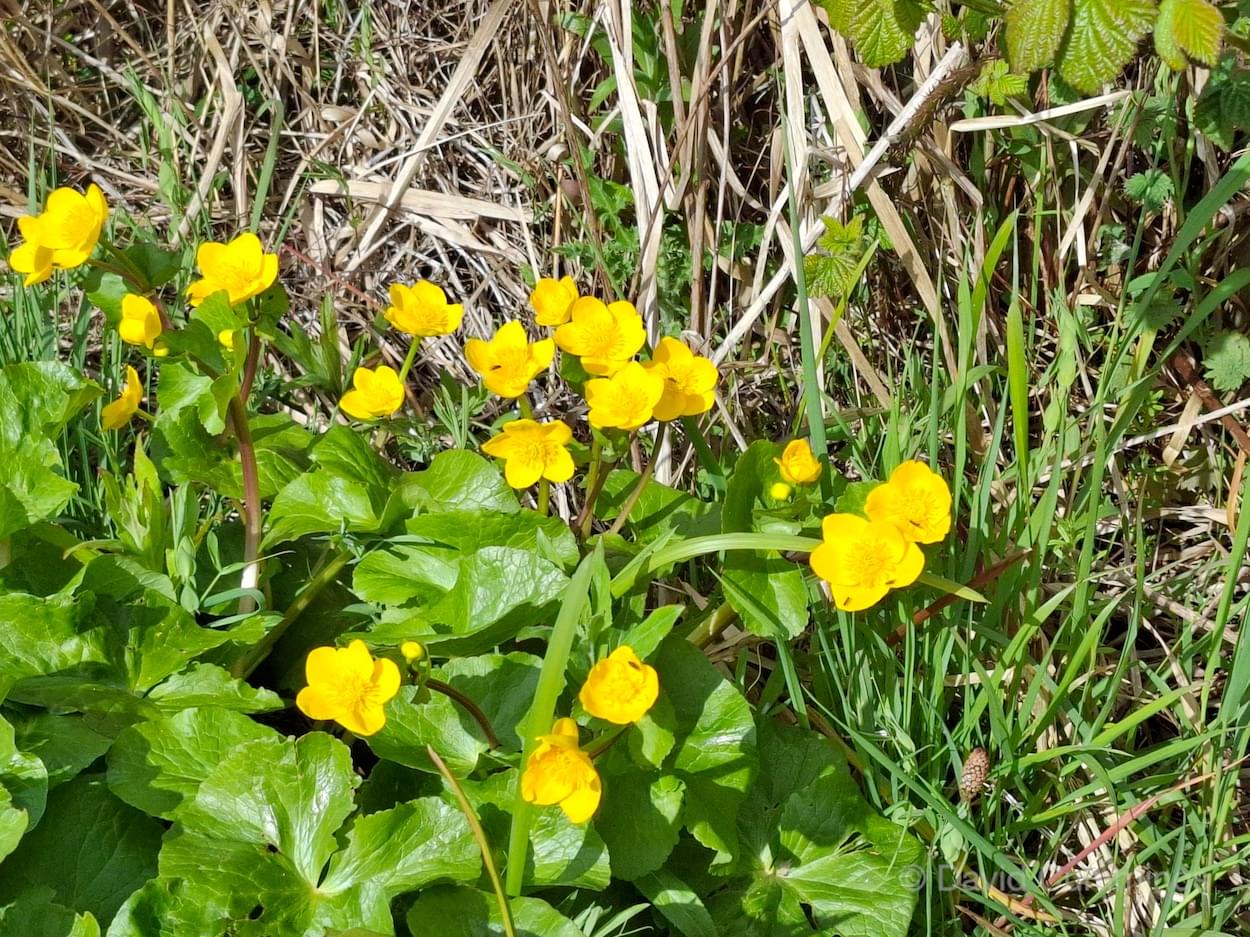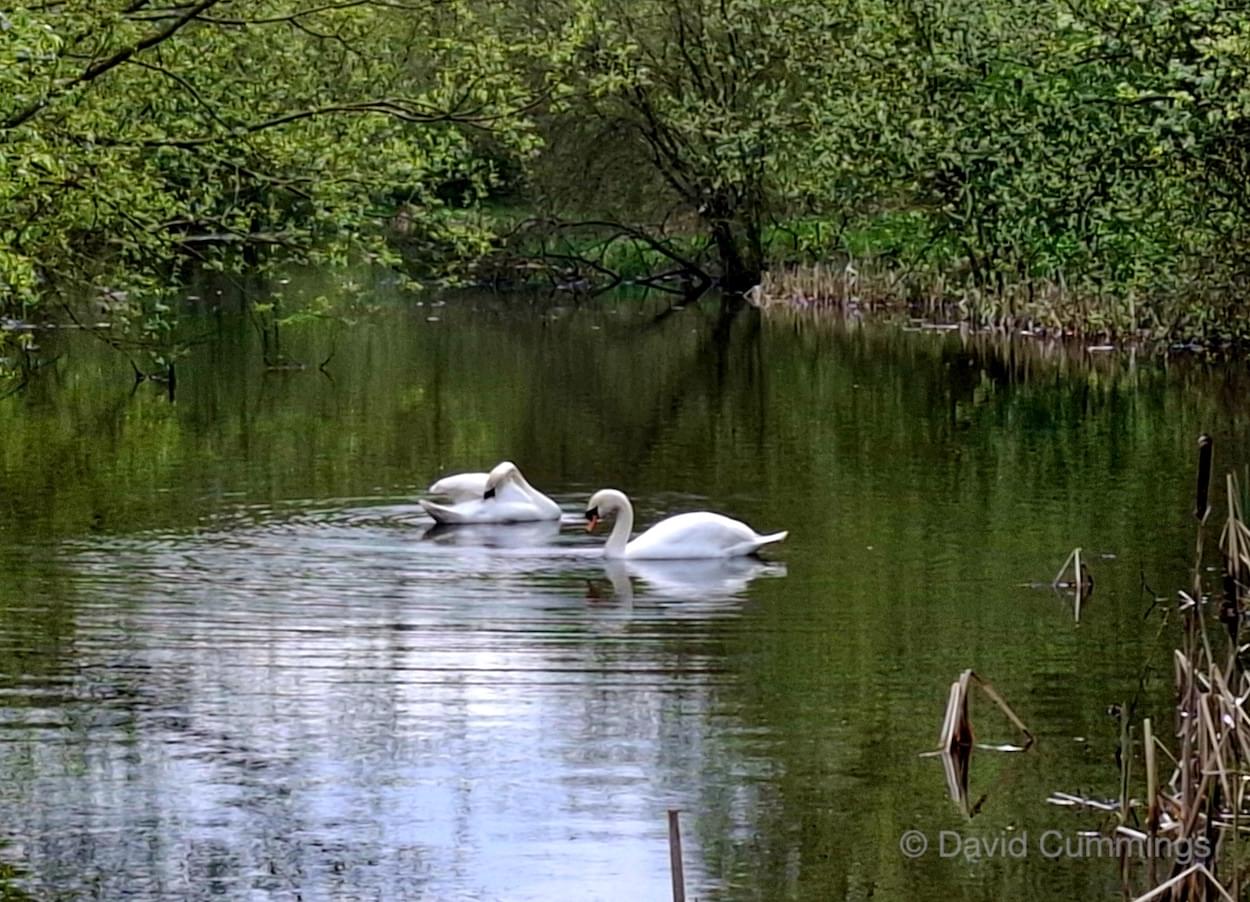
MAY

BY DAVID CUMMINGS BEM
My Own Migration Watch
This month’s edition of wildlife watch is taken up by my own migration watch, and visiting several reclaimed sites to see the effect of regeneration. To sum up, warblers are doing brilliantly and house, sand martins and swallows very poorly, almost negligible in fact.
Burton Meres. Our visit to this area of reclaimed mudflats, farmland and former fishery was very exciting, the highlights being a very close up view of a willow warbler, 14 whimbrel, 4 spotted redshank, a large red damselfly and a basking common lizard. Amongst the large number of avocets (100+), there were 500 black tailed godwits, little egrets, ruff, dunlin, dabchick, grey herons, peregrine falcon, marsh harrier & several mute swans. Warblers were well represented, with black cap, chiff chaff, willow, sedge, reed, grasshopper and cettis warblers in full voice. We saw several stonechats, and were told that there was a lesser whitethroat about. Butterflies were also emerging after the wet spring, and I recorded, comma, peacock, red admiral, brimstone, speckled wood, green veined white as well as numerous large & small whites and orange tips, both male and female. We also heard and saw a greater spotted woodpecker.
Dare Valley Country Park. This is a superb example of what has been achieved in South Wales, to reclaim land from the former coal industry, where the exploitation of coal took pride of place over everything else. The former Cwmdare Collery site is now a Country Park, and is a wonderful facility for local people. Gone are the black coal tips, the black streams and rivers, and everything that existed to mine the coal. We had been welcomed in the Park by the superb vibrant sound of both song thrush and black bird, in full voice near the visitor centre. The air in the valley is clean again, woodland trees, shrubs, flowers have now regenerated to give a beautiful landscape. The former pit head site is now a lake, with mute swans, dabchicks, and other waterfowl swimming on it, with several sand martins making the area their own. The surrounding area was alive with the sound of cuckoo, green woodpecker, chiff chaff, cettis, garden & willow warblers and black cap, the sights and sounds of the transformation that has occurred over the past thirty years. We had also registered a spotted flycatcher and common wheatear on route to South Wales.
Summer Leys Meadow. This former poor quality farmland along the River Nene was quarried for gravel in the 1980’s, and when the extraction had finished, the Hanson Aggregates Company and the local Wildlife Trusts have turned the area into a magnificent wildlife area, a reserve of over 50 hectares, with lakes and islands, many with gently shelving banks, surrounded by willows, wet grassland and small areas of woodland. It’s a perfect habitat for a wonderful variety of wildlife species. It is now, even after such a short time in existence, recognised as an SSSI, a Special Protection area and a Ramsar Wetland of International importance. There is a perimeter walk of about 5km, which takes you very close to the wildlife and visits to four major viewing hides. Our visit on this occasion, co -incided with the arrival of hundreds of migrant bird species. The air was just alive with the sound of blackcaps, chiff chaff, garden, willow, sedge & reed warblers, and the sound of cettis warblers exploded from the undergrowth, everywhere you walked. Despite this, the sight of 4 black terns, a relatively rare passage species, was the highlight of our visit. Seeing them flying over the big lake, and resting on one the less accessible islands for viewing, was very satisfying. There were also large numbers of swans all over the site, and smaller numbers of little and great white egrets, lapwing, redshank, greenshank, grey herons and great crested grebes. Small numbers of house and sand martins could also be spotted, together with a few swifts and swallows, hawking for insects over the lakes. It was a very warm sunny morning after heavy rains on the day of our visit, and brimstone and orange tip butterflies were everywhere. I estimate that we saw at least 25 brimstones, both male and female, and three pairs were demonstrating mating displays.
Local News. The first swallows arrived on the 18th April together with several house martins a week later. A tawny owl was seen in the daytime at Littleton, and the pair of swans at Walk Mill are back on their traditional nest site. A count of 12 collared doves was also made near Walk Mill. Several pairs of buzzards have been displaying over Rowton and Christleton, and one was feeding on a tree on the Riding School site alongside the canal. Willow warblers, black caps and chiff chaff can be heard all around the parish. Another red kite has been spotted this last month, but our highlight locally has been watching a pair of kingfishers nesting under the canal bank, opposite the towpath, south of Waverton Village. This has been a traditional wintering site for many years, but it is the first time since covid that we have seen them nesting there. The pair are fairly active at present, flying in and out of the nest site and along the canal, but we have had several sightings of five minutes or more, watching these extremely beautiful creatures, often with one of the pair guarding the nest and sitting in full view.
-
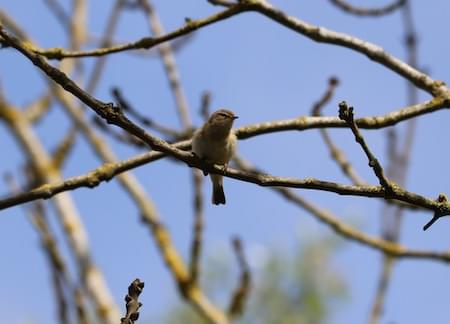
Chiff Chaff
-
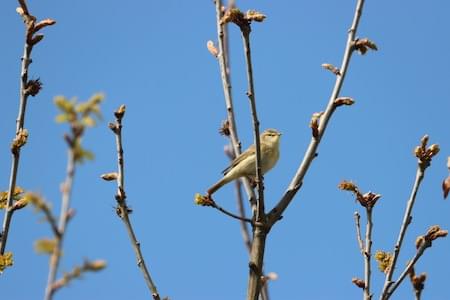
Willow Warbler
-

Black Tern
-
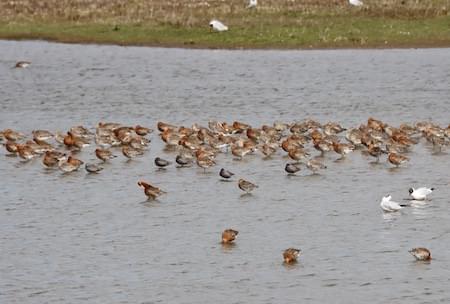
Spotted Redshank
-
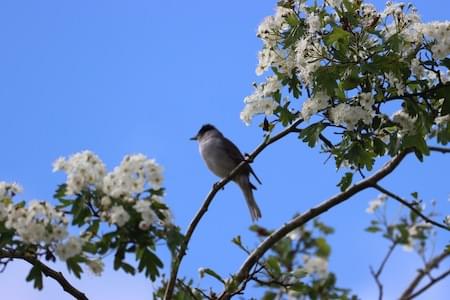
Black Cap
-
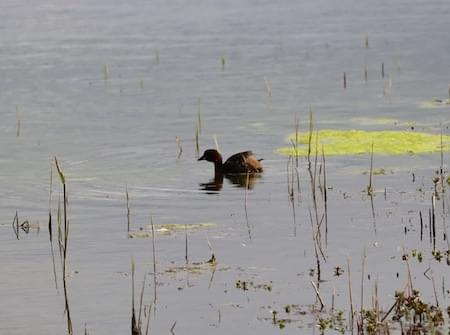
Little Grebe
-
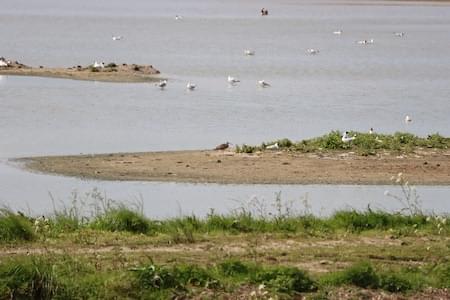
Whimbrel
-
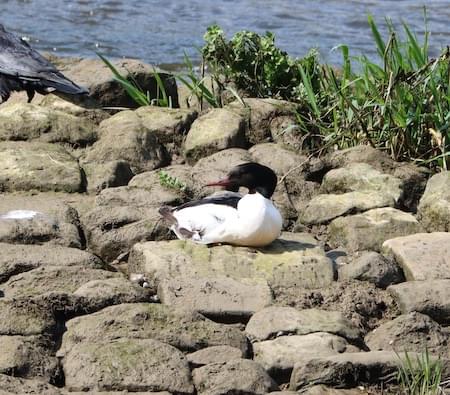
Gooseander
-
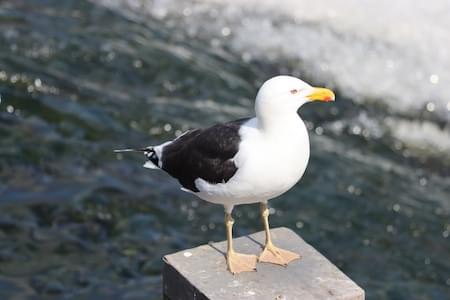
Greater Black Backed Gull
-
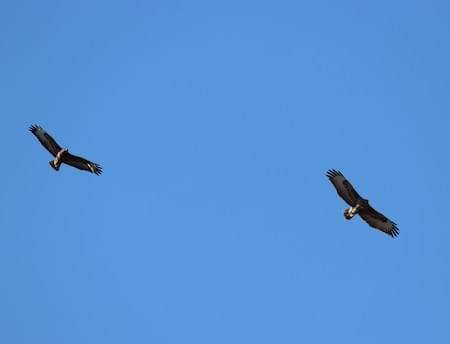
Buzzards over Croft Close Waverton
-
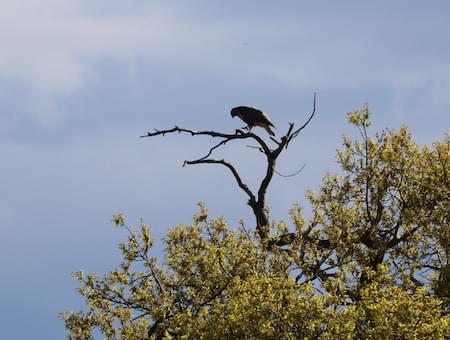
Buzzard feeding
-
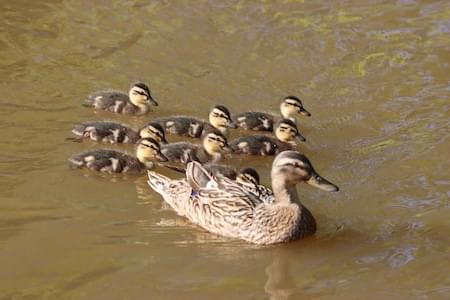
Mallard and Young
-
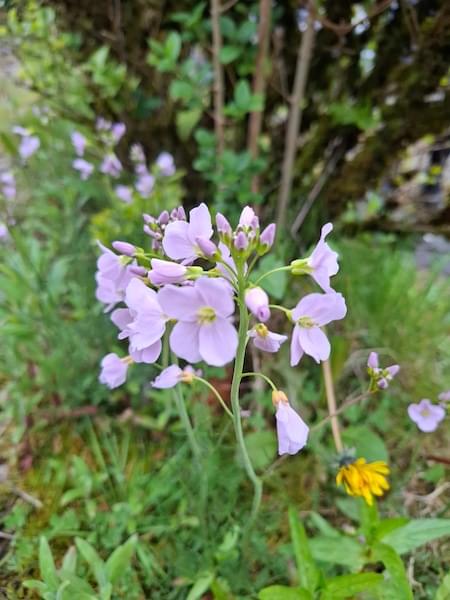
Ladysmock
-
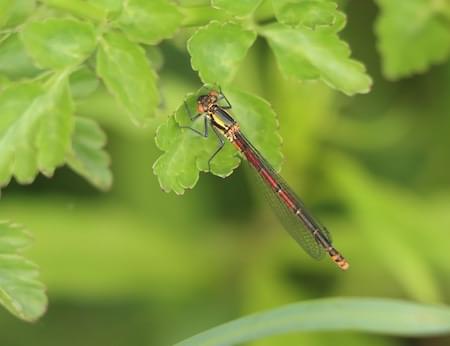
Large Red Damselfly
-
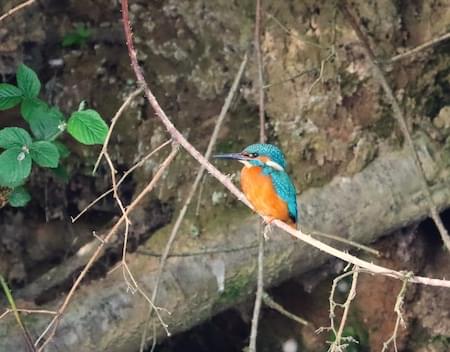
Kingfisher
-
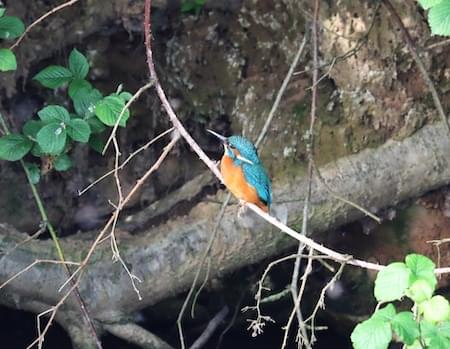
Kingfisher
-
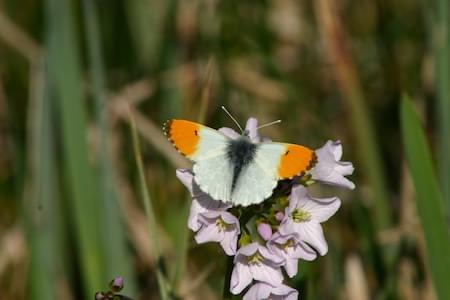
Orange Tip
-
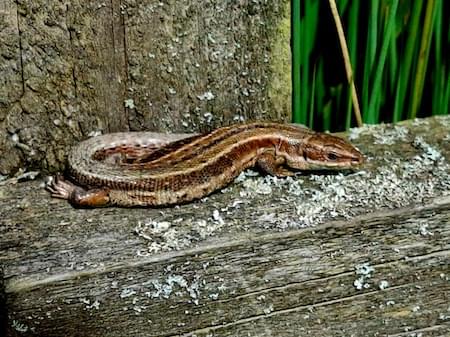
Common Lizard
-
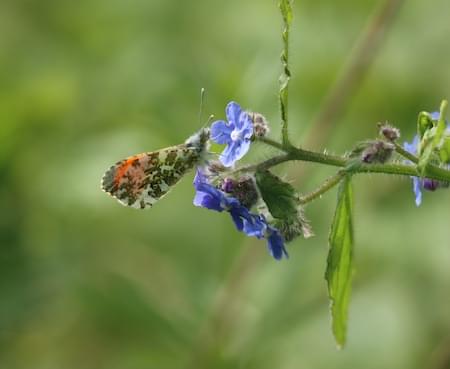
Orange Tip Male
-
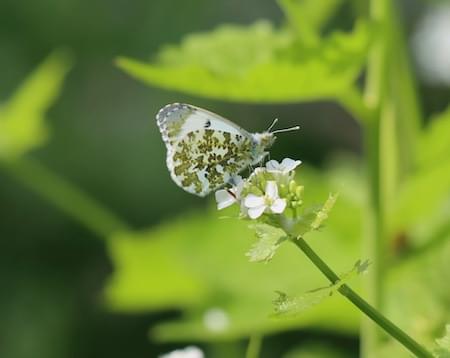
Orange Tip Female
-
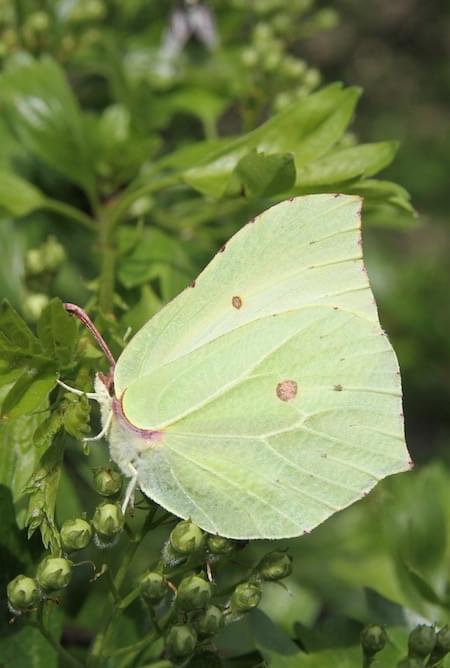
-
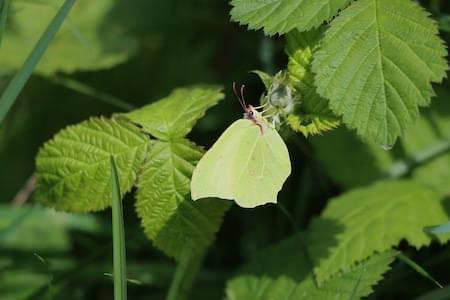
Brimstone Male
-
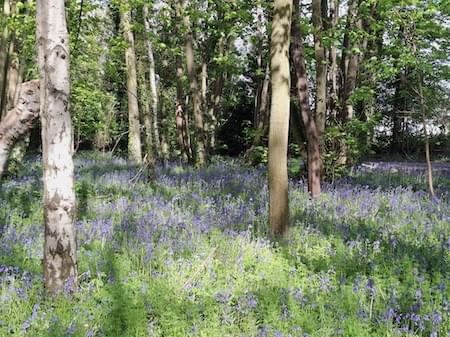
Bluebell Wood
-
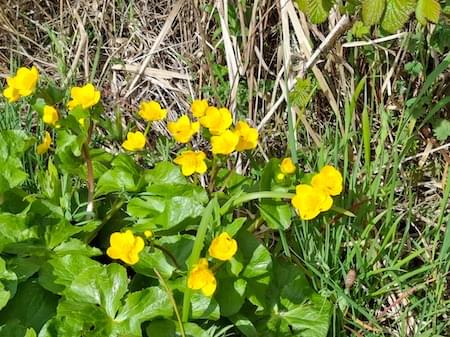
Marsh Marigold
-
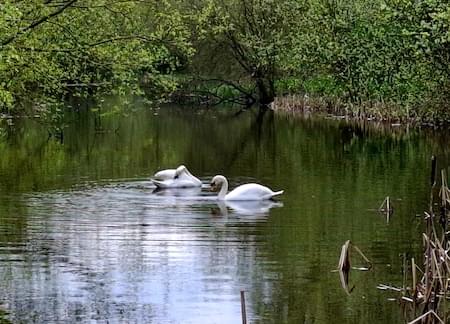
Sewans at Walk Mill
